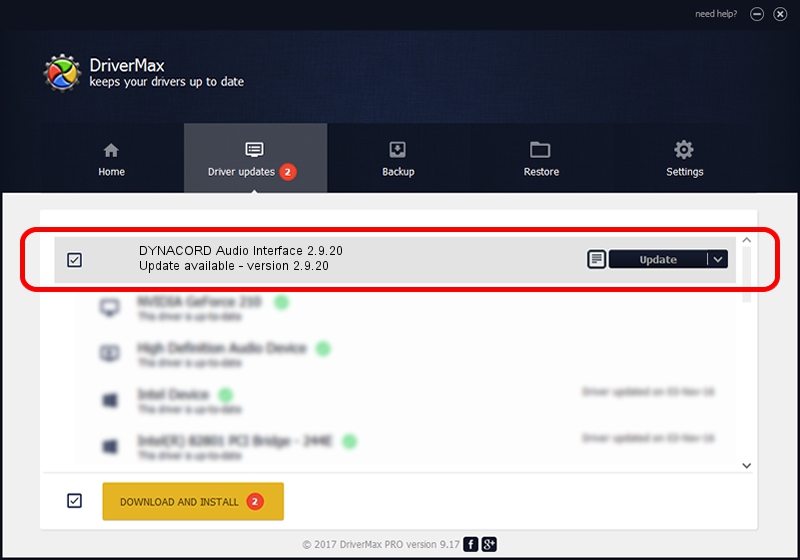
There's no shortage of compact live consoles around, but few have as many features and routing options as this new range from Dynacord. The latest series of consoles in Dynacord's CMS (Compact Mixing System) family is the CMS3 range, which consists of three models offering 10, 16 and 22 channels with on-board digital effects, and now also featuring a four-input/four-output USB digital audio interface. For this review, I was able to spend some time with the smallest member of the line-up, the CMS 1000-3.
As there are many drivers having the same name, we suggest you to try the Driver Tool, otherwise you can try one by on the list of available driver below. Please scroll down to find a latest utilities and drivers for your DYNACORD USB-AUDIO (WDM) 2.9.34 driver.
These mixers are aimed at an already well-supplied market sector, and products of a similar basic format are available from several manufacturers. Beyond compare 338 license key 2017. The CMS3 mixers are marketed strongly on the quality of their audio path and processing, and their flexible feature set. Apart from the number of mono mic channels, the three models are identically equipped in terms of number of buses, effects processors and I/O connectivity. Straight from the box, I liked the general appearance and main board ergonomics of the CMS 1000-3. For such a compact desk, the controls are well spaced and all the board labelling is clear and logical.
My first impression — even before plugging it in — was that the CMS 1000-3 was going to be an easy board to work with. The CMS 1000-3 has six fully featured mono channels, which are laid out in traditional fashion, with the XLR input connectors on the top panel. A separate balanced line input and insert jack (which can be used to provide a direct, pre-EQ output) are to be found next to the XLR socket, along with the input-level control and an 80Hz low-cut filter switch.
The first novel feature of the CMS 1000-3 appears at this stage, in the form of a preset EQ switch labelled Voice Filter. This applies a gentle boost below 300Hz and above 2kHz, with a slight cut (a smooth asymmetric curve to a maximum depth of around 2dB) in between, and can be used in addition to the other EQ controls.
Airlink awlh5025 windows 7 driver free. It's quite a gentle effect, overall, and I quite liked it for speech, where I found it added a touch of extra warmth and clarity — nothing dramatic, but it's there if you want it. The EQ section has standard three-band functionality, with shelving controls for LF and HF, and a swept mid-band section covering the range from 100Hz to 8kHz. All three bands operate smoothly and, for me, in exactly the right places. There's a good degree of control available, and the rotary pots feel 'low geared', in that there are no sudden changes throughout the range of adjustment. The amount of overlap between the three EQ regions also feels just right.
The remaining four channels are for stereo sources, and have a pair of balanced TRS inputs per channel, hence the total channel count of 10. The channel count of the CMS 1000-3 isn't quite the same as the total number of available inputs to mix, however, as each stereo channel also has a separate mic preamp (with phantom power available), which can be used as a mono channel if needed — a really useful feature, especially when you also realise that these mic inputs each have a dedicated input-level control and can be used at the same time as the stereo line inputs, thus providing an additional four inputs and taking the number of analogue sources to mix up to 14. True, these extra inputs share all of channel 7-14's facilities, such as EQ and aux routing, but it's nevertheless a potential get-out-of-jail-free card. It's also worth mentioning that stereo channels 7/8 and 9/10 are also used to control the inputs from the unbalanced phono inputs, for connecting CD players and the like, and channels 11/12 and 13/14 control the audio received via the USB port, although these are 'either/or' configurations, so you can't use analogue and USB signals at the same time. The four stereo channels have the same features as the mono strips, except that the mid-band EQ is fixed at 2.4kHz, and the pan pot acts as a balance control. At the bottom of each channel strip are the usual pan, mute and PFL controls, and a 60mm fader made by ALPS.